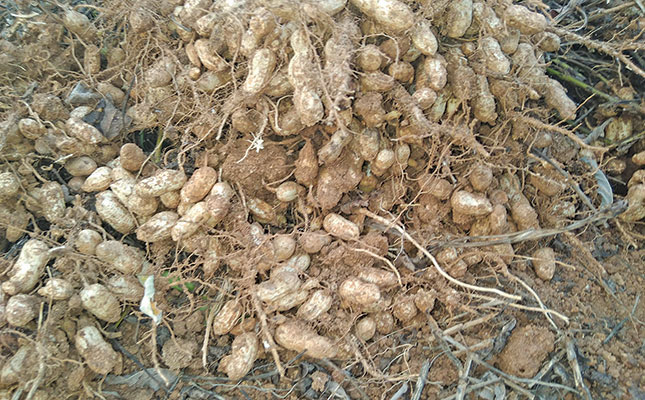
Photo: PixaHive
Agriculture is an important employer in Sudan, with around 80% of the working population employed along the agriculture value chain. The country is a major producer and exporter of sesame seeds, groundnuts and cotton.
Conflict is perhaps the biggest threat to sustainable food production in Sudan. Not only has it resulted in the displacement of millions of people, but it has also led to a lack of foreign investment and a crash in the economy, which has seen farmers unable to access finance to plant crops.
Conflict in the country has been ongoing for many years, and a military coup in October 2021 saw a resurgence of ‘ethnic’ wars. What’s more, at the end of August 2022, following a five-month ceasefire, conflict between the Tigray People’s Liberation Front in Ethiopia and the Ethiopian government again ensued.
Farmers from Sudan who lived along that country’s shared border with Ethiopia are concerned over the resumption of these hostilities.
Sudanese farmers told the Sudan Tribune that they were concerned about what the heavy artillery would mean for their crops and livestock. Farmer-nomad conflict is also an ongoing problem in Sudan, and the expected influx of refugees from Ethiopia will also have a negative impact on food security.
A May 2022 project initiated by the Food and Agriculture Organization of the United Nations (FAO) will see 180 000 households (900 000 people) in Sudan, including the most vulnerable farming and pastoralist communities, receive agricultural support over a period of time.
The UN Central Emergency Response Fund has donated US$12 million (around R206 million) to the project, which covers crop and livestock assistance, and aims to help build the resilience of resource-poor farmers and pastoralists in Sudan’s 14 most severely affected counties.
“This assistance includes the provision of certified crop, legume and vegetable seeds, donkey ploughs and hand tools, veterinary vaccines and drugs, protein-rich-concentrate animal feed, and mineral licks; as well as donkey carts and productive animals.
It also includes provision of cash and the rehabilitation of community productive assets such as small-scale water infrastructure, hafirs and pasture,” the FAO said in a statement.
Despite the challenges that Sudan faces, there are agricultural opportunities there, should the conflict subside. The country is a major producer of groundnuts, for example, producing around 14% of the world’s production.
GROUNDNUTS
Groundnuts (peanuts) are the most significant cash crops grown in Sudan, representing around 35% of all cash crops grown there. Sudan is one of the world’s biggest producers, although its prominence on the world market has declined over the past few years.
Groundnut production is particularly relevant to Sudan’s economy, as it generates much-needed foreign exchange. Domestically, groundnuts are used for consumption and processing. Primary production regions in Sudan include Al Jazirah, West Kordofan, North Kordofan and South Darfur.
In the 2011/12 season, Sudanese farmers produced 1,185 million tons of groundnuts. For the 2022/23 season, the US Department of Agriculture estimates that the country will produce 2,5 million tons of groundnuts, up 1,315 million tons from the 2011/12 season.
This coincides with an increase in hectarage planted to groundnuts, which was at 1,698 million hectares in 2011/12, and has since grown to three million hectares.
Despite the increase in hectarage, Sudan yields well below the global average of over 4t/ha. On irrigated land, farmers produce an average of 700kg/ha, while on dryland, they produce 300kg/ ha on average, according to Sudan’s National Chamber of Exporters.
Groundnuts on irrigated land are grown under relatively advanced technology, and the soil is often mechanically prepared, says the chamber. Ashford, a late-maturing variety of groundnut, is planted in April/ May, and takes 120 to 140 days to mature.
In contrast, dryland groundnuts are produced by small-scale farmers and little technology is used, with planting and harvesting done by hand. The early-maturing Spanish variety is mainly grown here and is planted in June/ August. This variety takes around 100 days to reach maturity. Around 70% of Sudan’s groundnuts are produced on dryland.
Sudan’s main markets for groundnut exports are Indonesia, the Philippines, Myanmar, Egypt, Turkey and China.
CHALLENGES
Low yields remain a challenge to Sudan’s groundnut production. Poor adoption of technology among smallholder farmers, as well as a lack of government support, are key reasons why the country’s yields per hectare remain relatively low.
As Sudan is also prone to drought, the development of improved drought-resistant cultivars is essential to drive the country’s groundnut production forward. Aflatoxin contamination is often a result of poor pre- or post-harvest handling, storage, or insect control. Improving these processes can also lead to an improvement in yield and the overall quality of the groundnut crop.











